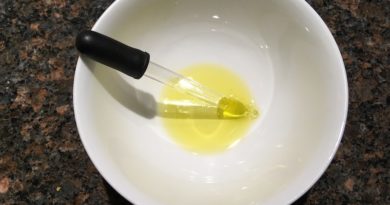Why So Cheap? – The Story Of Chi-Fi (Part 3)
Part 3 of 3. Start at Part 1 HERE.
This is the last and final segment of a 3-part essay, I shall elaborate on the actually material costs of many Chi-Fi earphones. A serious note… I have to be extremely careful with what I am about to write because I might make some companies very unhappy or even end up a lawsuit… So, wish me luck!
In Part 2, I mentioned that material takes up about 30% of the total cost. This 30% consists of not just the earphone but includes accessories as well. Let’s not discuss what is in the accessories yet, as most are quite standard. We are more interested in what goes into the earphone itself.
An earphone consists of housing (a.k.a. shell) and transducers (drivers), as well as wires and circuit boards (of which I won’t discuss here). Many manufacturers use hard plastic (example polycarbonates), acrylic polymer resin (both commercial and medical grade) or metal shell (usually magnesium or aluminum alloys). Obviously, metal shell is the most costly among the three. Second is acrylic polymer resin (medical-grade resin being more expensive as they have to be imported). Budget earphones are almost always made from mould-injected hard plastic which costs around $0.30 a pair (based on production run of 1,000 units). Depending on the manufacturing process, metal shell can cost 20~40 times more than hard plastic. Say, a $50 IEM with $10 metal shells (in pair). 3D printed acrylic polymer resin shell stands in between. However, some medical-grade acrylic resin shells cost as much as metal ones. Prices decrease when orders increase. It is not uncommon for a major Chi-Fi maker to order 10,000 units at one go if a particular model sells extremely well.
Since 2009, driver technology has improved by leaps and bounds. Today, beside balance armature, piezoelectric and planar, dynamic drivers consist of no less than 5 variants. With advancement, Chi-Fi manufacturers tapped into their expertise of OEM drivers from major brand-names (such as Knowles and Sonion) to produce their own version of drivers with basically the same specifications but at a fraction of the cost. Through time-tested and accumulated experiences, company like Bellsing is producing exceptional drivers capable of rivaling even the best from well-known mainstream brands. This allows many Chi-Fi makers to produce earphones that perform as good, if not, better than their competitors at a much lower cost. Again, with high volume indent orders, these drivers cost even less to supply.
Many Chi-Fi manufacturers like to market their products for using a particular renowned brand of drivers. But there is a dark secret behind, which very few people know. You see, during manufacturing process, there will be a small batch of drivers that do not meet the company’s stringent specifications or tests. Instead of refurbishing or disposing these “rejects”, workers smuggle them out of the factory in small quantities so as not to arouse suspicion, and sell them to some Chi-Fi companies at a fraction cost. And mind you… these drivers are in no way counterfeits! They are what the industry call “B-stock”. These “B-stock” drivers work perfectly fine, they just don’t meet the stringent specifications as required by the company. And these drivers will end up in your earphone that labelled “Genuine XXX brand drivers inside”. The wonderful part is Chi-Fi companies can still sell their earphones to you at a slightly higher price tag BUT no higher than some other earphone that uses “legit, fully-spec’ed” XXX brand drivers. Get it?
Simply put it, these Chi-Fi companies can claim they use genuine branded drivers but in actual fact, these are “B-stock” drivers from the factory disguised as legit stuff. Hey, most people will still buy their earphones because they are cheap! And these Chi-Fi makers are not bothered by the practice because they are protected by loopholes in Chinese laws. Furthermore, how can the manufacturer prove these are “B-stock”? Many don’t have a serial or batch number to cross-reference. Now, you may be wondering if this is what actually happened, why isn’t this discovered earlier? Well, this is a common practice in the industry. Also, the “If I don’t bother you, you don’t bother me” mentality helps buffer the acts. We make money and be merry together. A few companies, such as Knowles, have started to laser-engrave tiny QR codes on their drivers for traceability. This is a good safeguard for now, but as we all know, nothing is foolproof. Some Chi-Fi companies will think of ways to work around and beat the system.
Accessories don’t cost much to manufacture. There are many factories in China that specialized in cables – they only make cables and nothing else. Similarly, there are factories that churn out eartips by the thousands everyday. Your 8-core silver-plated 99.9999% oxygen-free copper upgrade cable costs just a few dollars to produce. And please, don’t tell me there are fake 8-core or 16-core cables in the market to cheat consumers… These are manufacturing faults, which need to be remedied by the company and its manufacturer.
Why so cheap then? We know earphones don’t cost much. We know there are many ways Chi-Fi makers can produce a pair of earphone without infringing copyrights or patent laws. We know by working closely with e-commence platforms, such as AliExpress, manufacturers do get incentives and heavy-discounted rates on international shipping. We also know that some Chi-Fi manufacturers use B-stock genuine drivers in their earphones so as to sell you “high-quality drivers” at unbelievable prices. When we sum-up these “knowledge”, we now have a bigger and clearer picture why Ch-Fi appeals to so many who want good sounding products at great prices.
With 11/11 Singles’ Day just around the corner, I am sure you will become a “smarter” shopper now, based on the information here, and find the absolute best deals.
Disclaimer: I don’t claim to know everything that is happening within the industry. I am writing from my experience or I have heard from others who are from the Chi-Fi circle. Some of the information MAY NOT BE 100% FACTUAL. Read with reservation.
You find an INDEX of our most relevant technical articles HERE.




